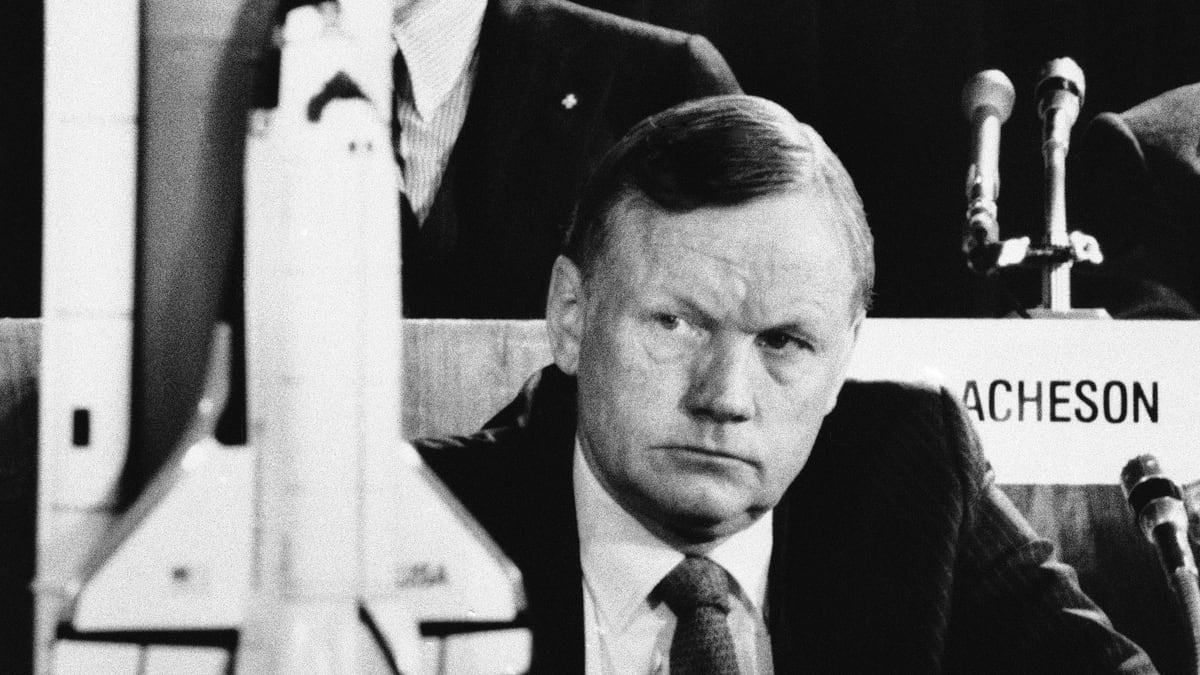It was a sight of horror to match the sights of wonder the American space program had provided to that point. On Jan. 28, 1986, every American who had thrilled to watch a man touch the surface of the moon 17 years earlier felt the tragedy that struck when the needle of Challenger, a blotch shrinking against the Florida sky, suddenly exploded. All seven astronauts aboard, including a New Hampshire high-school teacher, were killed instantly.

When President Ronald Reagan appointed the Rogers Commission the next month to determine just what had caused the shuttle to explode 73 seconds into its 10th mission, he chose Neil Armstrong, the man who perhaps more than any other was the face of American’s ambitions in space, to serve as vice chairman. The committee also included Nobel Prize–winning physicist Richard Feynman as well as the first American woman in space, Sally Ride, who died in July of this year. Attorney David C. Acheson was also appointed and was one of the committee members who worked most closely with Armstrong.
At stake in the commission’s report was whether the American space program would continue as it had, relying heavily on manned missions above the Earth, or whether greater resources should be dedicated to unmanned, robotic missions that would not involve any risk of lost life. The commission tried to steer clear of these twin minefields, Acheson said in an interview with The Daily Beast shortly after Armstrong’s death. Armstrong’s judicious voice as the country’s most visible space pioneer helped keep the commission on track, Acheson, now 91, recalled.
ADVERTISEMENT
“We were anxious not to try to trample on the grounds of controversy that involved the enthusiasts for the robotic programs who were often arrayed in Congress and elsewhere against enthusiasts for the manned space programs,” Acheson says of the committee’s work. “Neil, being an astronaut, was very objective about that and very wise in not saying, ‘Look, the interests and aims of the manned space program should override everything else.’”
The commission had its dramatic moments, as when Feynman dunked an O-ring, one of the insulators ultimately found to have failed, in a glass of ice water during a hearing to demonstrate the effect of cold on the seal. It was the officer-manager style disregard for the lives of the men and women who climbed into the shuttle, however, that most chilled Armstrong and Ride, Acheson said.
“The two astronauts on the commission were terribly concerned about the lack of sensitivity at the Marshall Space Center to the risk,” faced by astronauts, Acheson said. “It was the shock of the two astronauts on the commission that really made us focus on the extraordinary obtuseness of the Marshall Space Center.”
When it came time to write the commission’s report, the chairman, former secretary of state William Rogers, tasked Armstrong and Acheson with writing it together. For an engineer and an astronaut, Acheson said, Armstrong was not half bad wielding a pen. To test their writing chops, Armstrong came up with an idea for the two of them to each take a copy of an article from the aerospace periodical Aviation Week.
“Neil said, let’s go into separate rooms and edit this piece down and see if we can make a literate, readable, sensible piece with one half the number of words,” Acheson said. “An hour and a half later we came back and had very close to the same text. It was really amazing.”
Acheson and Armstrong then spent Memorial Day 1986 together in a rented, otherwise emptied office building on Madison Avenue past the Smithsonian buildings in Washington, D.C., with their deadline looming.
“We were closeted together at our headquarters all day long, working at our report, and we finally got it together for the printer at about 5 o’clock,” Acheson said. “I remember saying to Neil, ‘I’m not asking you to break a lifetime habit of avoidance of alcohol, but this seems like a time to celebrate.’”
“We had a couple martinis and an excellent dinner together,” Acheson said. The two never saw each other again.







